
September 8 to 10 mornings: Mercury and Regulus pair up
Mercury will pass the much dimmer star Regulus from September 8 to September 10, 2024. Look low in the eastern morning twilight about 40 minutes before sunrise. Here’s a binocular view for September 8 to 10. They will be 0.5 degrees apart – the width of a full moon – on September 9.
September 8: Saturn at opposition
Earth will fly between the sun and Saturn on September 8, 2024, placing the ringed planet at opposition – opposite the sun – in our sky. And that’s the best time to watch Saturn. Saturn is rising in the east at sunset and is visible all night. Then, for the rest of 2024, Saturn will remain visible in the evening sky. It’ll finally disappear in the sunset glare in February 2025.
Watch a video of Saturn at its brightest.
6 planets at once before sunrise now
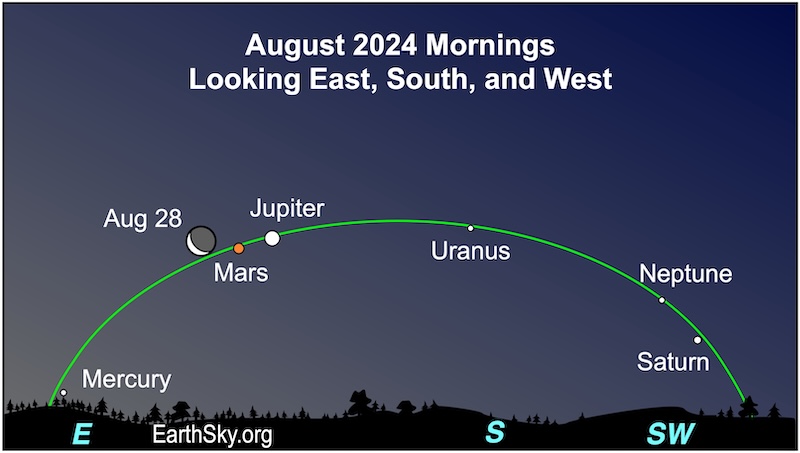
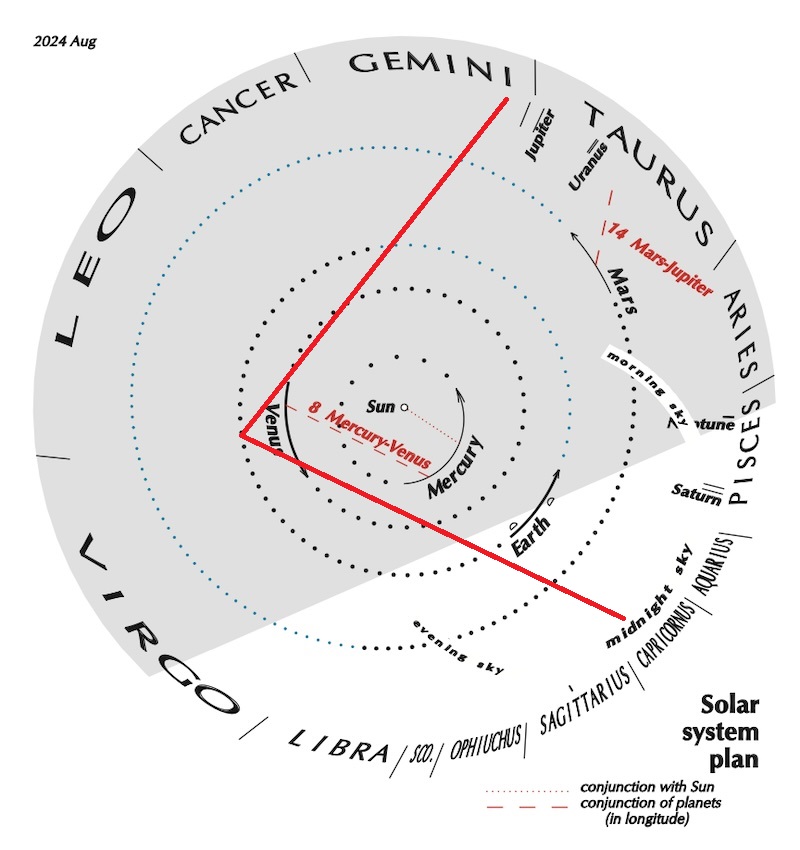
Here’s a 1-minute video from EarthSky’s Will Triggs about the 6 planets:
EarthSky’s Marcy Curran made a 1-minute video about this event, too! Enjoy.
September moon phases
EarthSky’s Marcy Curran previews moon phases for the month of September. See when the moon will be near visible planets and bright stars.
Zodiacal light best around September equinox
The zodiacal light – aka false dawn or dusk – is a hazy pyramid of light. It’s really sunlight reflecting off dust grains in the plane of our solar system. You need a dark sky to see it. Northern Hemisphere dwellers look east before dawn from about late August through early November. Southern Hemisphere dwellers look in the evening in those same months. The best time to look is in a moonless sky, especially around a new moon close to the September equinox.
Watch a preview video of the zodiacal light near the September equinox.
September 9 and 10 evenings: Moon near Antares
As the waxing crescent moon nears 1st quarter, it will move through Scorpius the Scorpion on the nights of September 9 and 10, 2024. It will lie closest to the bright red star Antares on September 10. Observers in parts of Africa, Madagascar, Kerguelen Island, Australia and Indonesia will see the moon occult Antares at 13 UTC on September 10. They’ll be visible until a little after 10 p.m. your local time.
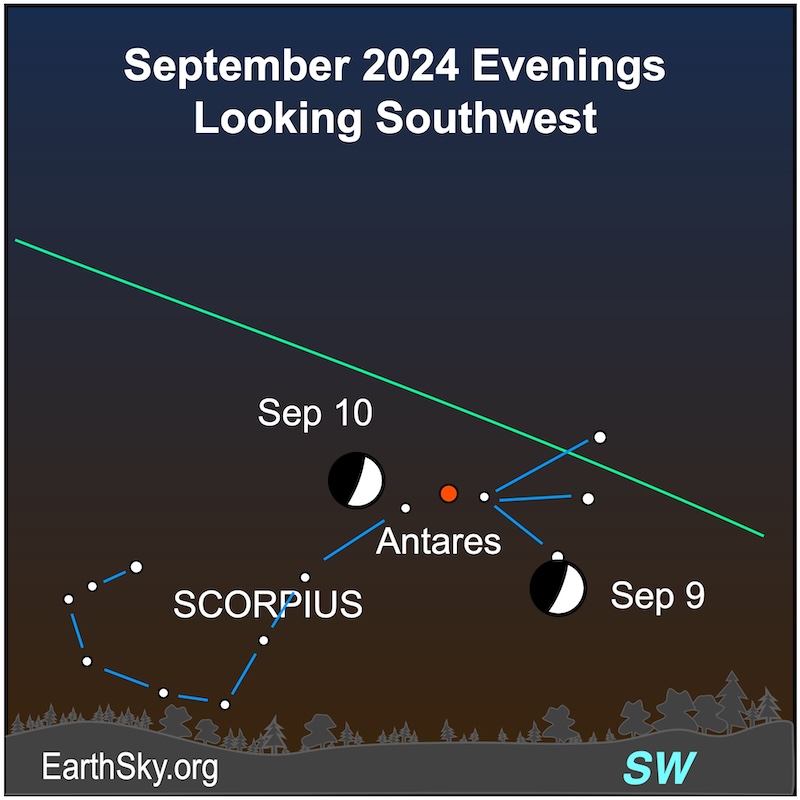
September 11: 1st quarter moon
The moment of 1st quarter moon will fall at 6:06 UTC (1:06 a.m. CDT) on September 11, 2024. A 1st quarter moon rises around noon your local time and sets around midnight. Watch for it high in the sky at sundown.
September 11 and 12 evenings: Moon near Teapot
On September 11 and 12, 2024, the waxing gibbous moon will glow low in the south as it moves through the Teapot, an asterism in Sagittarius the Archer. The moon’s glow may make spotting the Teapot difficult. They’ll be visible until around midnight your local time.
Our charts are mostly set for the northern half of Earth. To see a precise view – and time – from your location, try Stellarium Online.

September 15 and 16 evenings: Moon near Saturn
The bright waxing gibbous moon will hang near Saturn in the east after sunset on September 15 and 16, 2024. Observers in the western United States, Australia, western Canada and northwestern Mexico will see the moon occult Saturn at 10 UTC on September 17. They’ll set a few hours before dawn.
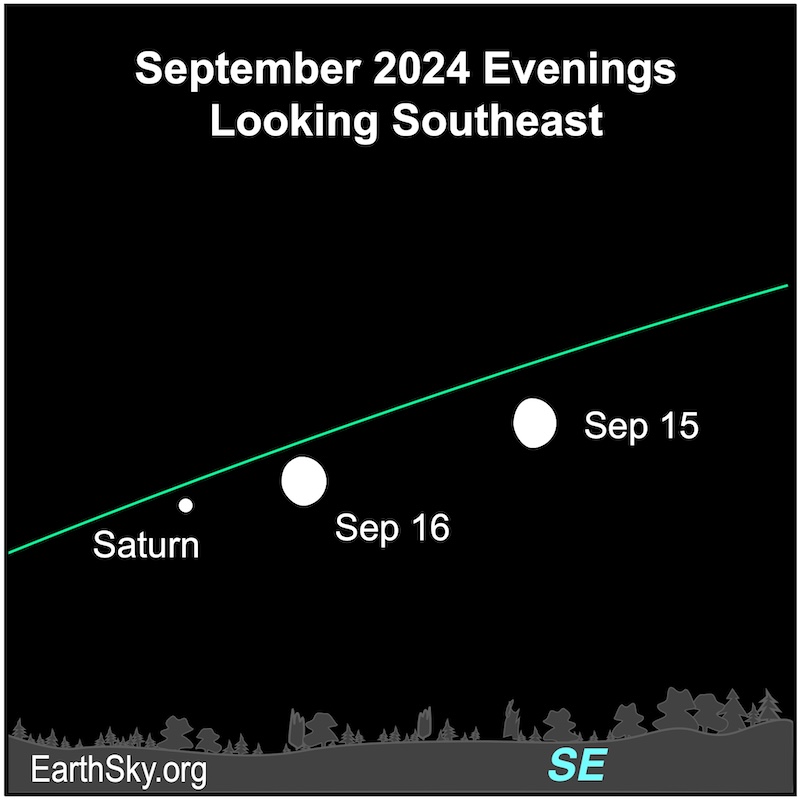
September 17 overnight: Super Harvest Moon and partial lunar eclipse
The moment of full moon will fall at 2:34 UTC on September 18, 2024 (9:34 p.m. CDT on September 17). A full moon rises opposite the sunset, is highest in the sky at midnight and lies low on the western horizon opposite the sunrise. This is the second of four supermoons in a row. And it’s the Harvest Moon, plus there’s a partial lunar eclipse. The moon will be partly eclipsed from 9:12 p.m. CDT to 10:16 p.m. Only 8% of the moon’s disk lies in the dark umbral shadow at mid-eclipse, which happens at 9:44.

September 18: Moon reaches perigee
The moon will reach perigee – its closest point in its elliptical orbit around Earth – at 13 UTC (8 a.m. CDT) on September 18, 2024, when it’s 222,007 miles (357,286 km) away. High tides possible.
September 20 overnight: Neptune at opposition
Neptune, visible only in telescopes, will be at its closest point to Earth on the overnight of September 20, 2024.
September equinox: September 22
The September equinox will arrive at 12:44 UTC today. The sun will be exactly above Earth’s equator, moving from north to south. It’s autumn for the Northern Hemisphere and spring for the Southern Hemisphere.
September 22 morning: Moon near Jupiter, Aldebaran and the Pleiades
On the morning of September 22, 2024, the waning gibbous moon will lie close to the bright planet Jupiter. The 3rd quarter moon will pass the Pleiades. Plus the fiery red star Aldebaran, the Eye of Taurus the Bull, will shine nearby. They’ll rise before midnight and be visible through dawn.
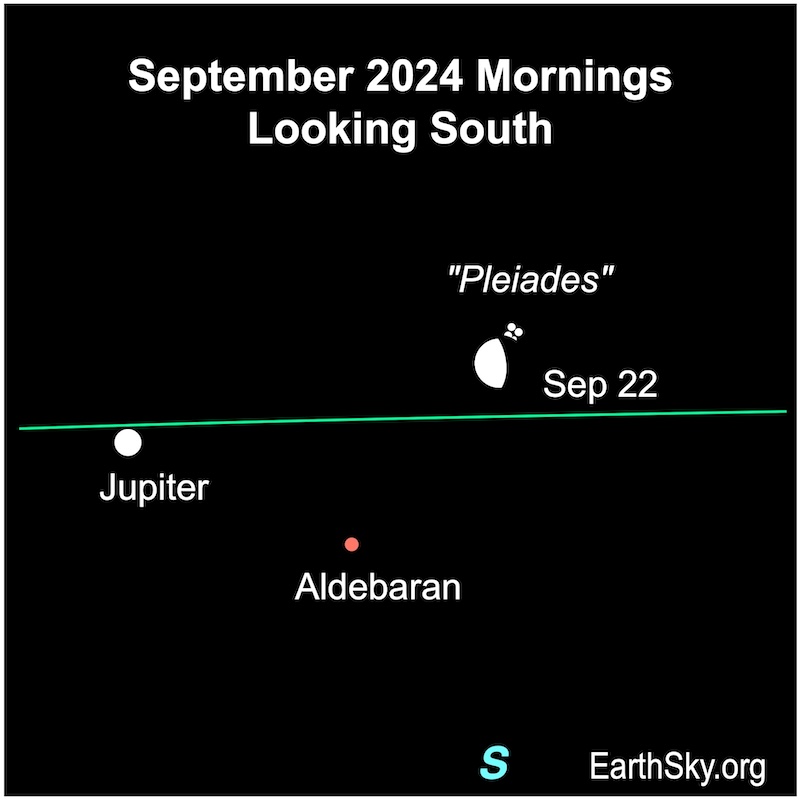
September 23 and 24 mornings: Moon near Jupiter, Mars and 3 bright stars
The 3rd quarter moon on the mornings of September 23 and 24, 2024, will slide by bright Jupiter. Red Mars will lie nearby. Also, look for the bright stars Capella, Aldebaran and Betelgeuse. Plus the shimmering glow of the Pleiades star cluster is nearby. They’ll rise before midnight and be visible through dawn.
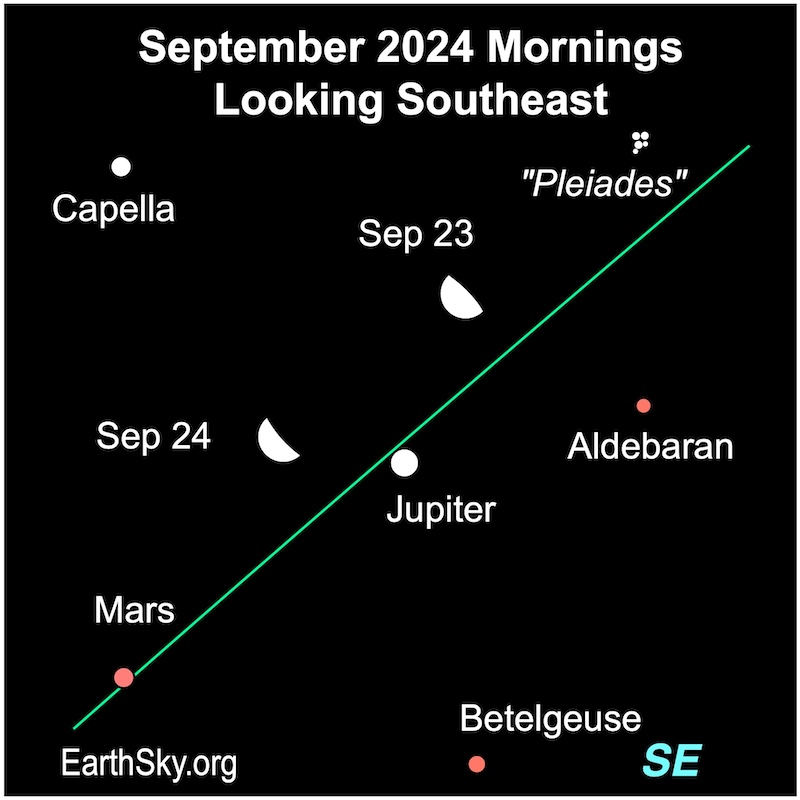
September 24: Last quarter moon
The moment of last quarter moon will fall at 18:50 UTC (1:50 p.m. CDT) on September 24, 2024. It’ll rise after midnight your local time and will set around noon. Look for it high in the sky before dawn.
September 25 and 26 mornings: Moon near Mars, Castor, Pollux and Procyon
On the mornings of September 25 and 26, 2024, the waning crescent moon will lie near Mars and pass the twin stars of Gemini, Castor and Pollux. The bright star Procyon in Canis Minor the Lesser Dog will shine nearby. They’ll rise after midnight and be visible through dawn.
Our charts are mostly set for the northern half of Earth. To see a precise view – and time – from your location, try Stellarium Online.
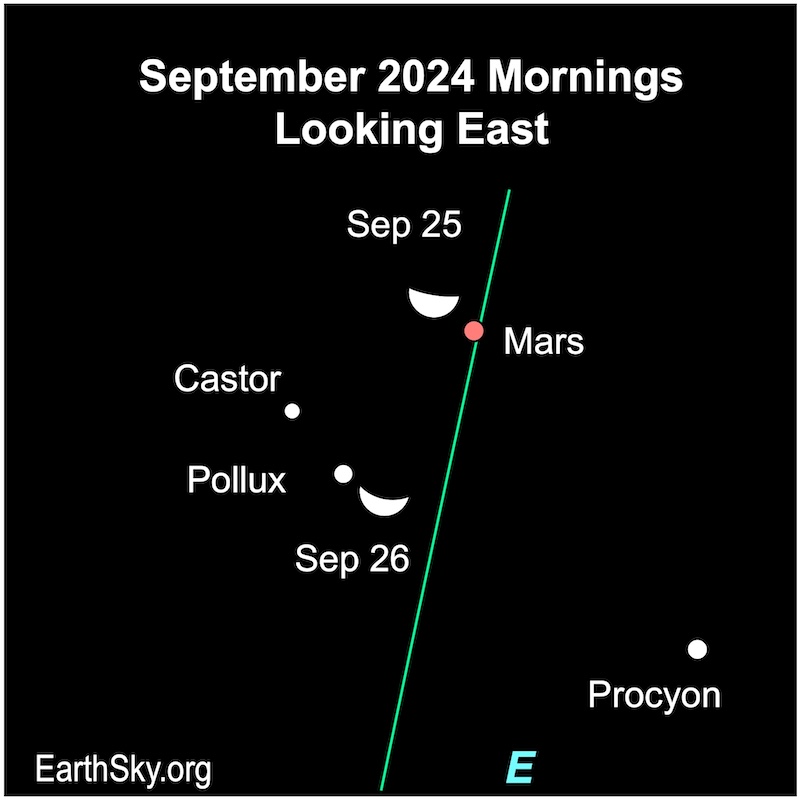
September 27 and 28 mornings: Moon buzzes the Beehive
As eastern twilight begins to brighten on September 27, 2024, the waning crescent moon will move close to the faint Beehive star cluster. In a dark sky, the Beehive is an easy target with binoculars. On the morning of September 28, the moon will hang between the Beehive and Leo the Lion’s brightest star Regulus. They will lie low on the horizon. They’ll rise a few hours after midnight.
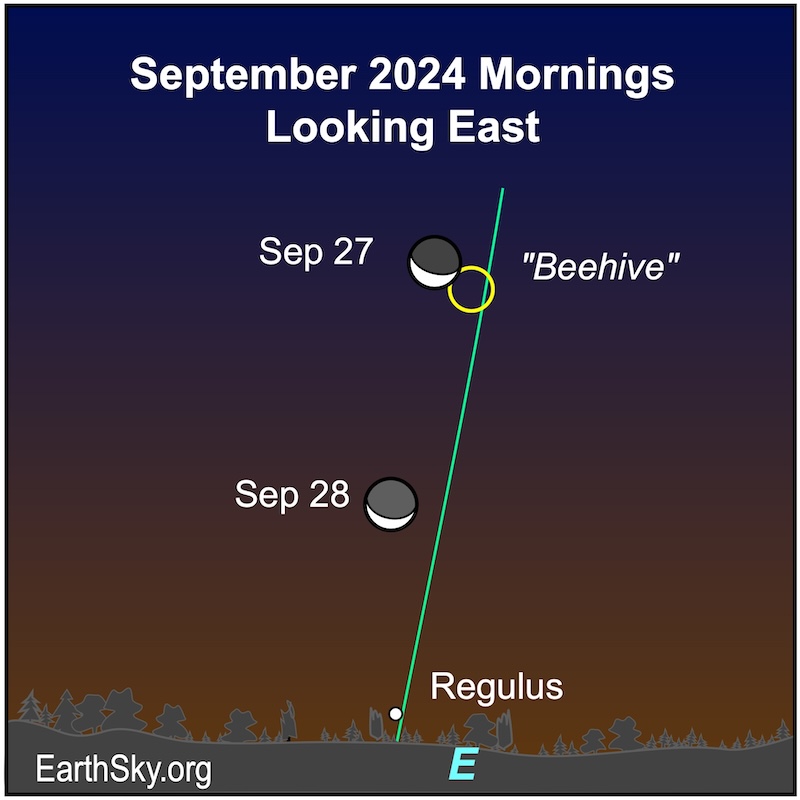
September 27 morning: Moon and Beehive binocular view
Binoculars will help show the Beehive star cluster next to the waning crescent moon on the morning of September 27, 2024.

September 29 and 30 mornings: Moon and Regulus
On the final two mornings of September 2024, the waning crescent moon will float in the eastern morning sky. On September 29, 2024, it will lie next to the star Regulus, the brightest star in Leo the Lion. And on September 30, the moon will hang low the eastern horizon. The dark portion of the moon will be glowing with earthshine. That’s reflected light from the Earth. Look for them about 75 minutes before sunrise.
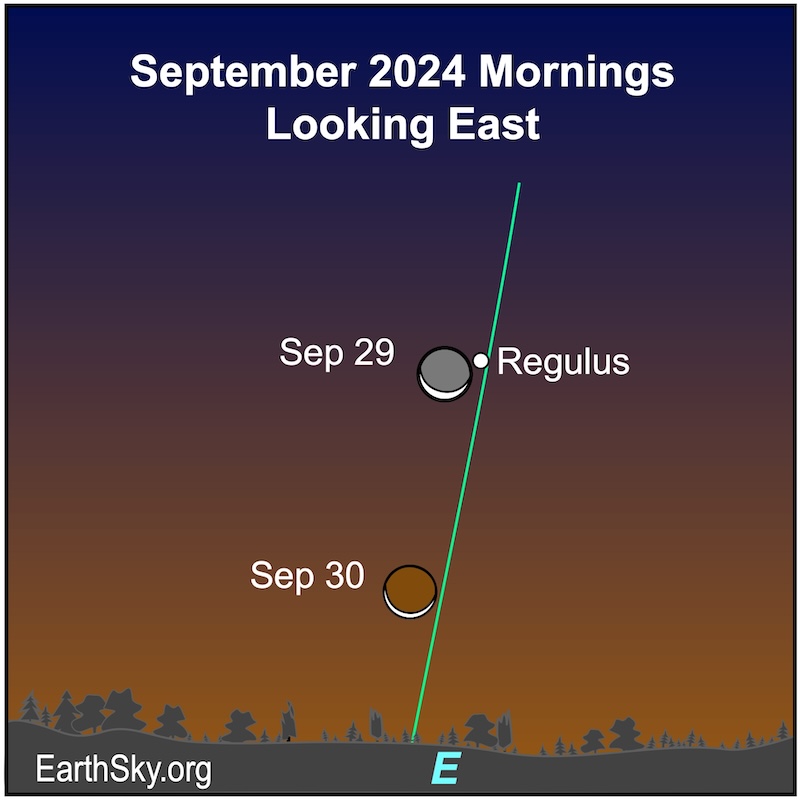
September 30: Mercury at superior conjunction
Mercury will move along the far side of its orbit, and will reach superior conjunction – on the opposite side of the sun – on September 30, 2024.
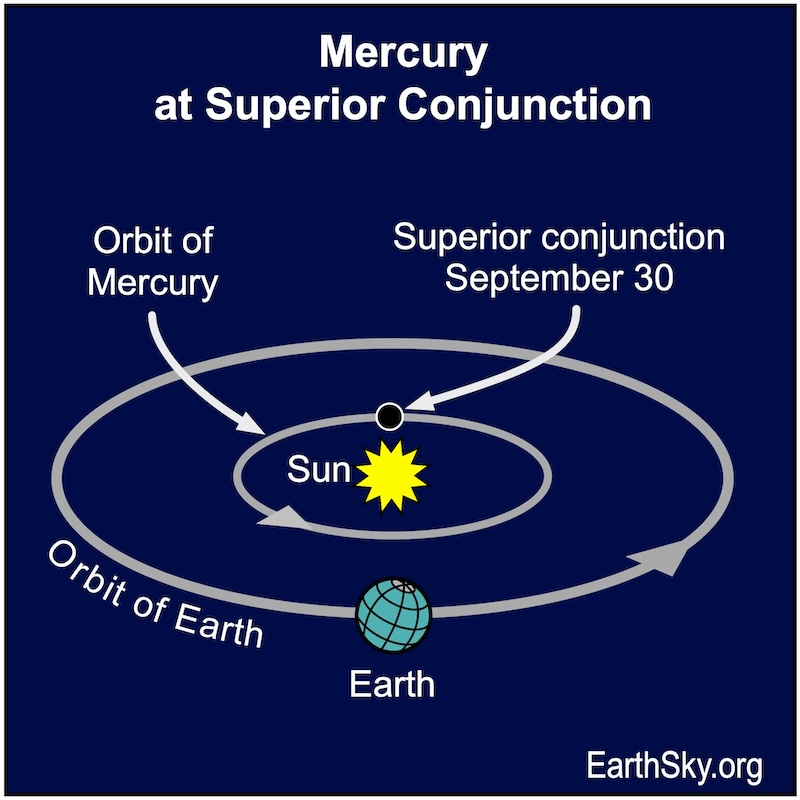
Stars and constellations high in the sky during September
If you’re out stargazing on any September evening, look for these stars and constellations overhead in the sky.
Cassiopeia
You can find Cassiopeia the Queen in the northeast around the month of September. It is composed of five moderately bright stars that form a distinctive M or W. If you have a dark sky, look below Cassiopeia for a famous binocular object. This object is called the Double Cluster in Perseus.

Cepheus
On September evenings, the house-shaped constellation Cepheus lies upside down in the northern sky. It’s between the W shape of Cassiopeia and the Little Dipper.

Lyra
Here’s the constellation Lyra the Harp. It’s made of a triangle and a parallelogram. Its brightest star is Vega. And next to it you’ll find Epsilon Lyrae, the famous Double Double star. Through a telescope you can see a famous planetary nebula: M57, the Ring Nebula.
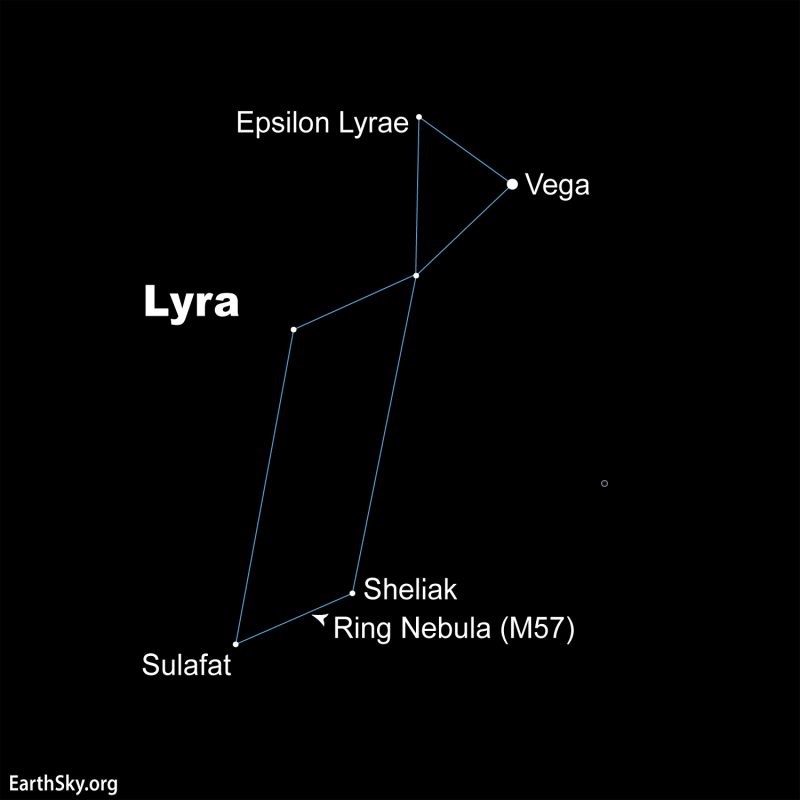
Our charts are mostly set for the northern half of Earth. To see a precise view – and time – from your location, try Stellarium Online.
September morning planets
In September 2024, Jupiter will shine brightly at the center of a triangle formed by the bright stars Capella, Aldebaran and Betelgeuse. Mars and the shimmering glow of the Pleiades star cluster are nearby. Jupiter rises before midnight local time and is prominent through dawn. Jupiter will be closest and brightest for 2024 in December.
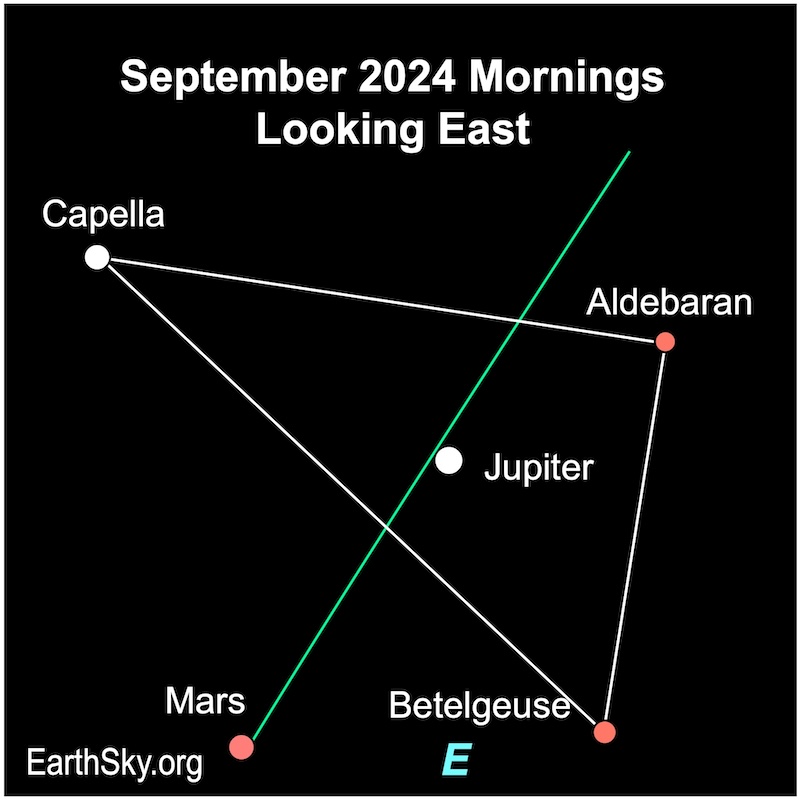
In September 2024, red Mars will continue moving away from Jupiter and it will slide toward the twin stars of Gemini, Castor and Pollux. Also nearby is the ruddy star Betelgeuse. It’ll rise after midnight and is more obvious in the sky before dawn. It’ll be at its closest and brightest again in January 2025.
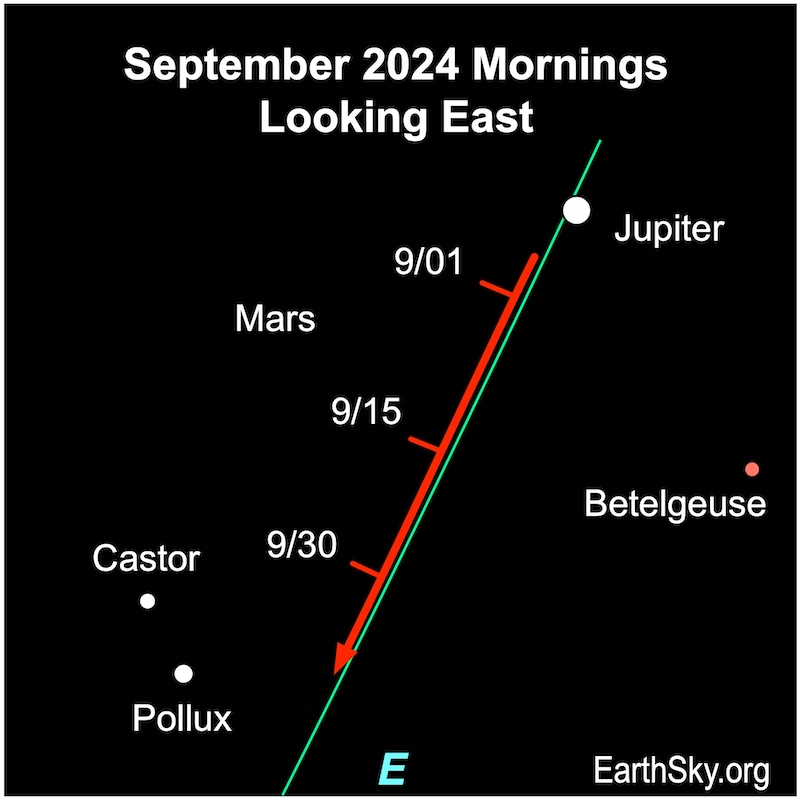
In September 2024, Mercury will lie low in the bright eastern twilight about 40 minutes before sunrise. It will reach its greatest elongation – greatest distance from the sunrise – on September 5, 2024. It will float closest to the star Regulus on September 9, and will slip out of view after mid-September. It’ll brighten through September before disappearing from the morning sky near the end of the month. This will be the best morning apparition of Mercury for the Northern Hemisphere this year. Southern viewers can see it too.
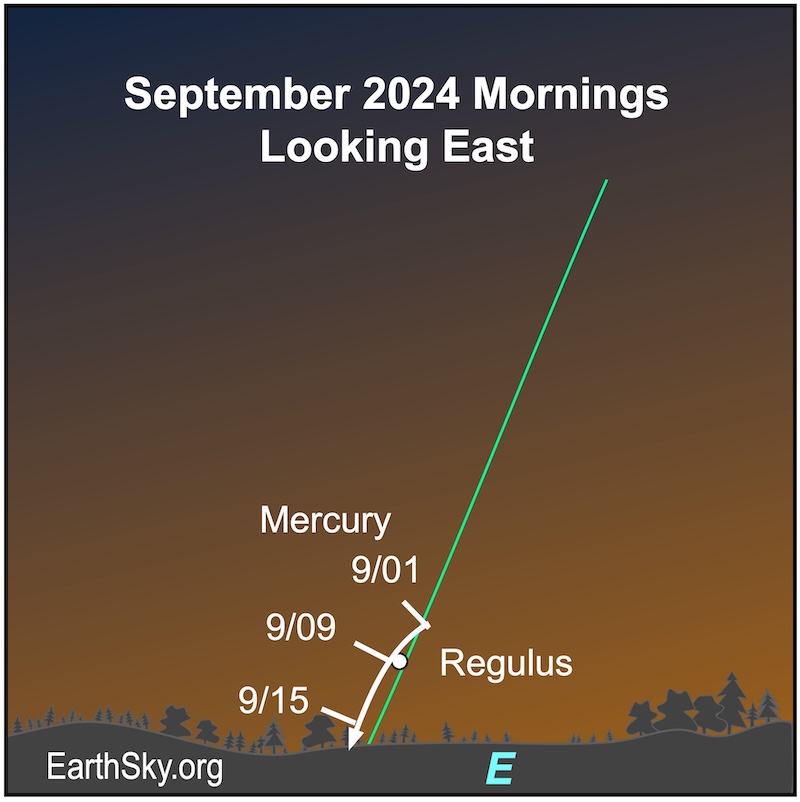
September all night planet: Saturn
In September 2024, Saturn will lie low in the east shortly after sunset and be visible all night until dawn. It will reach its closest point to Earth on September 8 when it will lie directly opposite the sun from Earth. The best time to watch Saturn is around its opposition. Saturn is rising in the east at sunset and is visible all night. Afterward, for the rest of 2024, Saturn will remain visible in the evening sky. It’ll finally disappear in the sunset glare in February 2025.

September evening planet: Venus
In September 2024, Venus will lie low along the western horizon shortly after sunset. On September 4 and 5, the thin waxing crescent moon will float near Venus. In the middle of the month, Venus will lie near Spica, the brightest star in Virgo the Maiden. They are at their closest on the evening of September 17. During the rest of the month, bright Venus will shine low in the southwest shortly after sunset. Venus will continue to ascend and become a dazzling evening star through the end of the year. It’ll reach its greatest distance from the sun in January 2025.
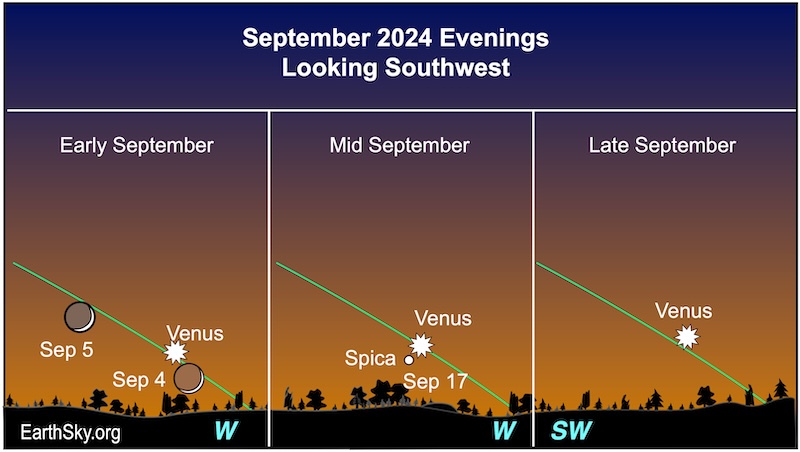
Sky dome maps for visible planets and night sky
The sky dome maps come from master astronomy chart-maker Guy Ottewell. You’ll find charts like these for every month of 2024 in his Astronomical Calendar.
Guy Ottewell explains sky dome maps

Heliocentric solar system visible planets and more
The sun-centered charts come from Guy Ottewell. You’ll find charts like these for every month of 2024 in his Astronomical Calendar.
Guy Ottewell explains heliocentric charts.
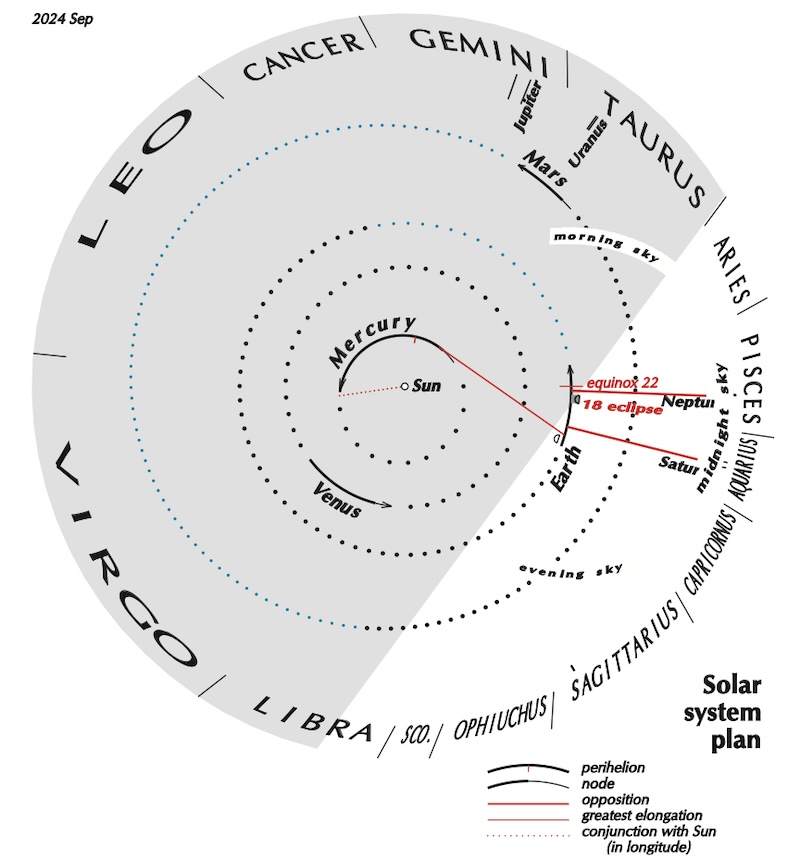
Some resources to enjoy
For more videos of great night sky events, visit EarthSky’s YouTube page.
Don’t miss anything. Subscribe to daily emails from EarthSky. It’s free!
Visit EarthSky’s Best Places to Stargaze to find a dark-sky location near you.
Post your own night sky photos at EarthSky Community Photos.
See the indispensable Observer’s Handbook, from the Royal Astronomical Society of Canada.
Visit Stellarium-Web.org for precise views from your location.
Almanac: Bright visible planets (rise and set times for your location).
Visit TheSkyLive for precise views from your location.
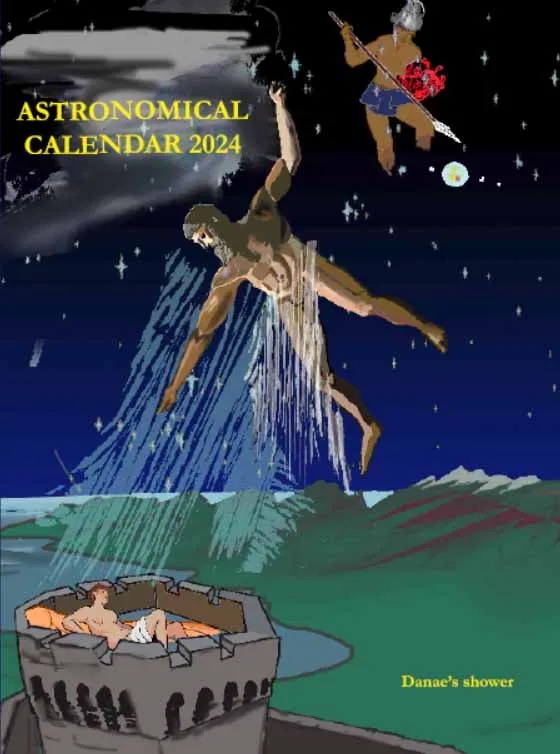
Bottom line: Visible planets and night sky guide for September 2024. Six planets are still visible in the early morning. Mercury will pass the star Regulus from September 8 to September 10, 2024. Look low in the eastern morning twilight about 40 minutes before sunrise.











